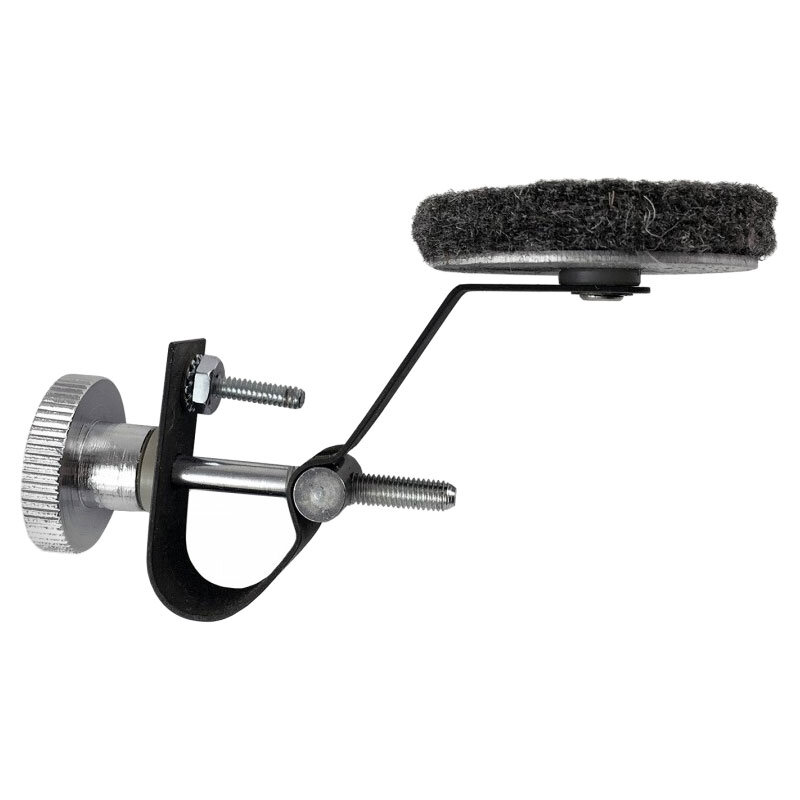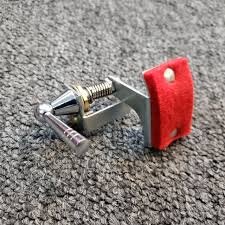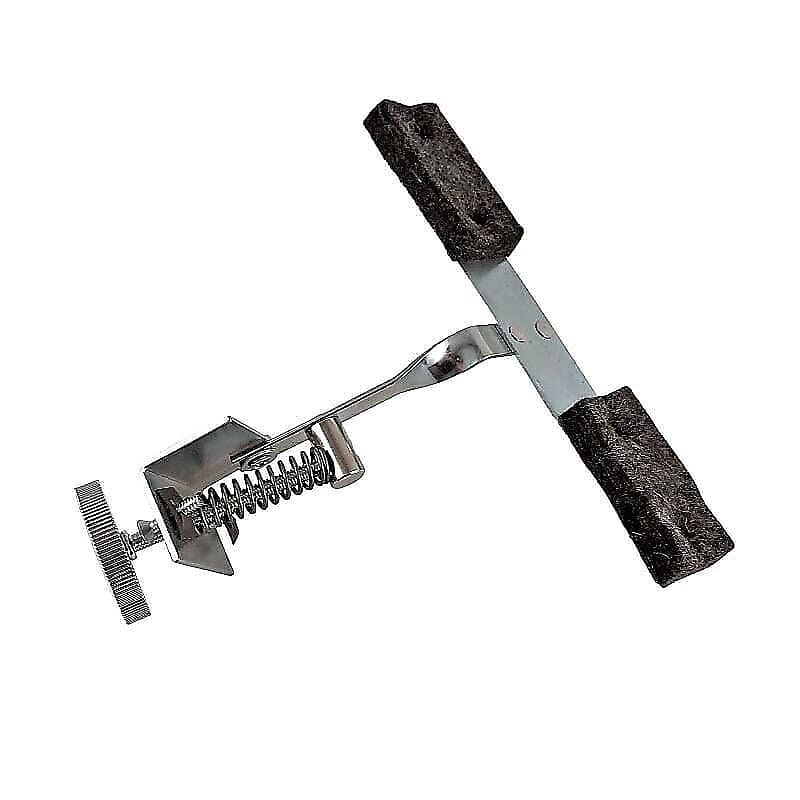A wonderful invention that permeated the drum industry for decades was the internal “tone control.” The name is somewhat optimistic. The devices were there to minimize ring, but if applied too liberally they could really mess with the sound ... and sometimes they rattled. After the rock heyday of the ‘60s, internal tone controls began to fade away and are now rather hard to find. (A lot of the vintage drums I’ve seen have had them removed -- and too often lost.)
Contending with ring is always an issue for many drummers, so let's examine the field of available 'damping'* options.
From Down-under
The original factory-installed tone controls press a soft damping pad against the drum head from inside the drum. They are simple to operate and do a fairly good job. However, when you strike the drum you push the head into the damper, which can increase its damping effect. A strip of cloth under the head is much the same.
Take It From The Top
External dampers affix to the drum’s hoop and lower a pad onto the head. When you strike the head, it moves away from the damper, which reduces the damping effect and lets the drum 'speak'. When the head returns to rest, the damper once again engages fully. Wallets and such on the snare fit into this category.
Ring Around the Noises
Narrow rings of drum head material that sit just inside the drum's rim are very effective at removing ring. Because they’re not pressing against the drum head, they allow the drum to be expressive when struck while eliminating a great deal of ring. Damping 'donuts' also come in foam or other material, and are sometimes integrated into the drum head at the factory.
Stuck On You
Stick-on dampers (tape, gels, exotic putties) do two things: they reduce ring and they provide ballast. Because they ride along with the head’s vibration, they neither increase nor decrease their damping effect. They also add weight to the head, which can increase a drum’s depth, body and resonance while reducing unwanted ring. Stick-ons are cheap, easy to use, and infinitely adjustable.
So Which Method Is Better?
I find that no one solution covers all situations. Some drums need a lot of damping, and some sound great with little or none. You might even find that you need more than one damping tool to do the job (I have one raucous floor tom that requires a tone ring, and external damper plus a gel pad!). The key is to try the different options and find what works for you.
* Damping vs. Dampening
There's a case to be made for using the word damping when referring to reducing ring. Dampening suggests wetting something whereas damping suggests muffling. A common trick with hand drums — and with all drums in the old days — was to dampen the leather head with water to lower the tone. So in theory, one might first dampen the head and then dampen it, or vice versa ... dampen a head using water and damp a head by putting some tape on it.




